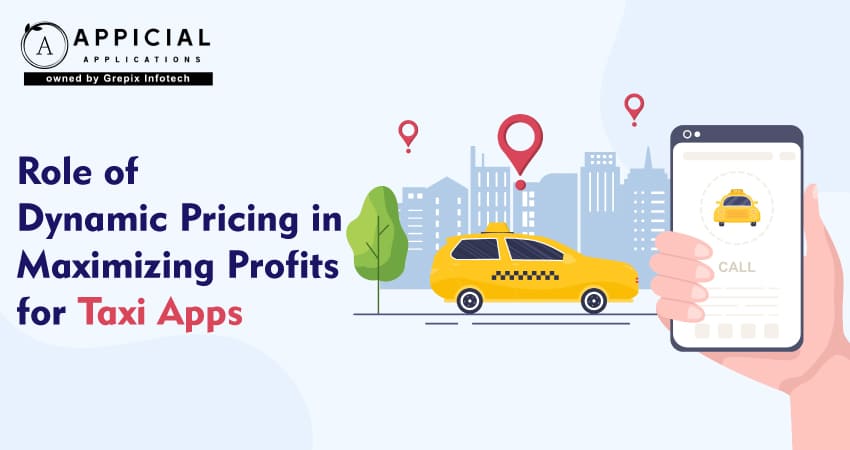
Role of Dynamic Pricing in Maximizing Profits for Taxi Apps
Dynamic pricing stands as a cornerstone strategy for taxi apps, playing a pivotal role in maximizing profits while balancing demand and supply effectively. By leveraging real-time data to make informed pricing decisions, taxi apps can remain competitive and profitable in a fast-evolving market. While the challenges of dynamic pricing are not insignificant, with careful implementation and a focus on transparency and customer engagement, taxi apps can harness this powerful tool to enhance both their service quality and bottom line. As the taxi industry continues to evolve, dynamic pricing will undoubtedly continue to be a key factor in the operational strategies of successful taxi apps.
The taxi industry has seen transformative changes with the advent of mobile technology, particularly through the development of taxi apps that streamline the process of booking, riding, and paying for taxis. One of the most significant innovations in this field has been the implementation of dynamic pricing models. Dynamic pricing, also known as surge pricing or demand pricing, adjusts the cost of rides based on real-time demand and supply metrics. This approach not only addresses the balance between supply and demand but also significantly enhances profitability for service providers. This blog explores how dynamic pricing functions within taxi apps and its impact on maximizing profits, improving service availability, and customer satisfaction.
Dynamic pricing is a pivotal strategy for taxi apps, crucial for maximizing profits while balancing supply and demand. By leveraging real-time data, taxi apps adjust fares during peak demand, ensuring competitive profitability and market adaptability. This model not only boosts earnings during high-demand periods but also regulates demand, incentivizes drivers, and enhances service efficiency. Despite its advantages, challenges like customer perception, regulatory scrutiny, and market competition require careful management. Effective strategies include transparent communication, surge pricing caps, personalized discounts, and regular data analysis to optimize pricing and maintain customer satisfaction. As the taxi industry evolves, dynamic pricing remains essential in operational strategies, helping taxi apps like Appicial Applications stay ahead in a competitive landscape.
Understanding Dynamic Pricing
Dynamic pricing is a strategy that involves varying the price for a product or service in real time based on demand, supply, and other external factors. In the context of taxi apps, fares may increase during peak hours, bad weather, or special events when the demand for rides exceeds the number of available drivers. Conversely, prices may drop during low demand to attract more customers.
Mechanics of Dynamic Pricing in Taxi Apps
Taxi apps employ algorithms that calculate fare adjustments by considering several factors:
- Demand Intensity: The number of requests in a particular area.
- Supply Availability: The number of available drivers in or near the requested location.
- External Factors: Weather conditions, traffic congestion, ongoing events, and even the time of day.
- Historical Data: Past data concerning peak times, common routes, and average fare adjustments.
These elements help the app to determine the optimal price that balances rider demand with driver availability, ensuring that drivers are incentivized to be on the road when they are most needed.
Benefits of Dynamic Pricing
1 Maximizing Profits
The primary advantage of dynamic pricing is the potential for increased earnings. During high-demand periods, higher fares mean greater revenue per ride. For instance, during concerts, sports events, or inclement weather, people are more likely to pay premium prices for convenience, thus driving up profits significantly.
2 Regulating Demand and Supply
Dynamic pricing helps manage the equilibrium between demand and supply. Higher prices during peak times reduce the number of people willing to pay for rides, aligning demand more closely with the available supply of drivers. Likewise, lower prices during slow periods can increase demand, ensuring drivers still have the opportunity to earn.
3 Incentivizing Drivers
By increasing fares during busy times, drivers are encouraged to work during peak hours or in high-demand areas, thus ensuring that supply meets demand. This not only boosts their potential earnings but also improves service availability for customers.
4 Improving Service Efficiency
Dynamic pricing promotes efficiency by motivating drivers to operate in high-demand areas, which reduces wait times and increases the responsiveness of the service. This optimization of resources leads to a better allocation of rides and enhanced customer satisfaction.
Also Read: BlaBlaCar Clone: The Ultimate Guide to Safe Carpooling
Challenges and Considerations
While dynamic pricing offers numerous benefits, it also presents challenges that need careful management.
1 Customer Perception
Customers might view surge pricing as exploitative, especially if the price increases are steep or frequent. Managing customer relations requires openness regarding the pricing process and unambiguous communication during peak hours.
2 Regulatory Scrutiny
Some cities and countries have regulations that limit or ban dynamic pricing due to concerns about fairness and accessibility. Taxi apps must navigate these legal landscapes carefully.
3 Market Competition
Competitors might capitalize on negative perceptions of dynamic pricing by offering fixed rates or lower surge multipliers. Maintaining competitive yet profitable pricing strategies is essential.
Strategies for Implementing Dynamic Pricing Effectively
1 Transparent Communication
Informing customers about how dynamic pricing works and why prices are higher can help mitigate negative perceptions and build trust. Many successful apps provide notifications explaining surge pricing before users confirm their rides.
2 Cap on Surge Pricing
Implementing a maximum limit on surge pricing can prevent excessively high rates that might alienate customers. This balance can maintain profitability while keeping the service attractive even during peak times.
3 Customer Segmentation
Offering personalized discounts or loyalty rewards can keep price-sensitive customers engaged. For example, frequent riders might receive notifications of expected surge times and be offered discounts to ride at off-peak times.
4 Analyzing Data for Continuous Improvement
Regularly reviewing the effects of dynamic pricing on both earnings and customer satisfaction can help companies adjust their algorithms and strategies. This data-driven approach ensures that pricing remains optimal for both drivers and riders.
Conclusion
Dynamic pricing has established itself as a cornerstone strategy for taxi apps, crucial in maximizing profits while effectively balancing supply and demand. By leveraging real-time data to make informed pricing decisions, taxi apps can remain competitive and profitable in a fast-evolving market. The implementation of dynamic pricing not only enhances profitability but also improves service availability and customer satisfaction by ensuring that drivers are incentivized to meet demand when and where it arises.
However, the challenges associated with dynamic pricing such as customer perception, regulatory scrutiny, and market competition require careful management. Transparency in communication, setting reasonable caps on surge pricing, and offering personalized incentives can mitigate potential drawbacks. Regular analysis and adjustment of pricing algorithms are also essential to maintain an optimal balance between profitability and customer satisfaction.
Appicial Applications is a leading taxi app development company, and embracing dynamic pricing models is essential for staying ahead in the competitive taxi industry. By integrating sophisticated algorithms and focusing on transparent, customer-centric strategies, Appicial can harness the power of dynamic pricing to enhance service quality and drive profitability. As the taxi industry continues to evolve with technological advancements, dynamic pricing will undoubtedly remain a key factor in the operational strategies of successful taxi apps. Appicial's commitment to leveraging this powerful tool positions it to lead the market, meeting both driver and customer needs effectively while maximizing profits.
Looking out to start your own venture like Uber? Try out our HireMe Taxi Uber Clone, the easiest way to kick-start your taxi business.






